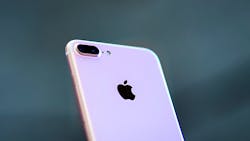Apple’s iPhone Sales Set to Rebound … But for How Long?
First, the good news: Apple Inc. results next week will likely show iPhone sales growing again, bucking a year of declines.
OK, now the bad news: The average selling price of the handsets in the key holiday quarter ending in late December may show customers settling for older iPhone 6S models, rather than the iPhone 7, introduced in September, according to some analysts.
“Recent smartphone customers increasingly are opting for the iPhone 6S,” Barclays analyst Mark Moskowitz wrote in a note to clients this week as he downgraded his recommendation on Apple stock to hold. “We detect increasing concern among industry participants that smartphones in general have evolved technologically to become more than good enough to serve most users’ digital needs over multiple years or until the device breaks.”
Apple is scheduled to report quarterly results on Jan. 31. Analysts currently predict an average selling price, or ASP, of $688 for the iPhone line in the holiday quarter, down from $691 a year earlier, according to estimates compiled by Bloomberg News. That’s even though the iPhone 7 Plus model costs $20 more than the iPhone 6S Plus when it was introduced. A new iPhone launch has in previous years consistently led to an increase in ASP.
An ASP decline may suggest the iPhone 7’s better camera, faster processor, improved battery life and water resistance weren’t enough to draw customers away from the 6S. The trend would underscore concern that smartphone advances nowadays aren’t enough to maintain the bonanza iPhone revenue growth that the Cupertino, California-based company used to enjoy.
“We know what a smartphone looks like and does,” billionaire technology investor Peter Thiel told the New York Times recently. “It’s not an area where there will be any more innovation.”
Apple’s revenue decline in the last fiscal year, which ended in September, represented the first such drop since 2001, as falling iPhone sales dragged down the total. Industrywide smartphone shipments were likely flat in 2016, according to researcher IDC. As recently as the second quarter of 2015, the market was growing more than 10% a year.
Apple is likely to have sold about 76 million phones over the holiday quarter, according to the average of analyst estimates compiled by Bloomberg News, up from 75 million handsets a year earlier. Analysts expect revenue to rise 2% to $77 billion, with surging sales from the App Store and Music streaming service compensating for any dip in iPhone takings.
Even after revenue from services soared last year, the iPhone still accounted for almost two-thirds of Apple’s $216 billion annual sales. The handset’s importance means any ASP weakness will focus investor attention more keenly on the next iPhone, which is likely to be unveiled later this year, the device’s 10th anniversary.
Demand for this model, which analysts tentatively dub the iPhone 8, 10 or X, will be gauged by Apple’s sales forecast for the three months through March. Should it fall short of the $54 billion expectation, that may suggest slack demand for current products as buyers await the new model.
“The (next) iPhone gives Apple a little bit of protection,” said Gene Munster, the co-founder of Loup Ventures and long-time Apple analyst.
The new device gives executives a ready excuse should the March outlook disappoint, he noted. “It’s a good get out of jail free card,” Munster said, “since investors want to own the stock for the next product cycle.”
By Alex Webb
About the Author
Bloomberg
Licensed content from Bloomberg, copyright 2016.
